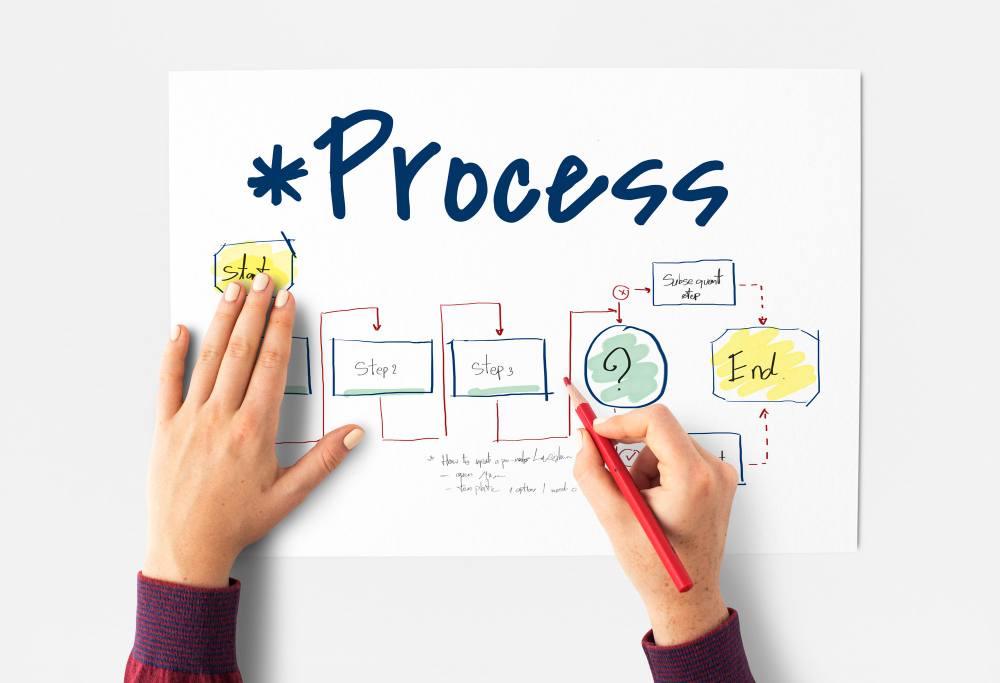
Why process documentation only works when it’s accurate
In many small businesses, there’s a shared sense of relief once everything is “finally written down.” The team feels organised. You can point to the shared folder, the Notion board, or the binder that lists every process from start to finish.
For a while, it feels like your technology is doing its job. The automations run, dashboards update, and tasks move as expected. But over time, people start working around the system. And when something goes wrong, everyone insists they followed the process.
That is when many leaders realise that what is documented no longer matches their technology or how their team actually works.
Documentation of business processes only works when it’s accurate, regularly reviewed, and matched to how work actually happens. Without that, documentation creates confusion instead of clarity.
The illusion of documented control
For many small teams, documenting processes feels like a milestone. It means the hard part of defining how you work is finished.
This is what often creates the illusion of control.
Leaders believe they have visibility because the steps are on paper. The problem is that processes do not stay still. A process might have been updated verbally during a meeting or adapted to fit a new tool. The team, trying to keep things running smoothly, adjusts in the moment, but what’s written remains untouched.
Recent research on software deployment across UK businesses highlights that unclear processes cause technology delays and integration issues. When these gaps are left unaddressed, each new tool or system inherits the same weak foundation.
Over time, the disconnect between how work is documented and how it actually happens grows wider, making future integrations even harder to manage.
 How accuracy fades in the documentation of business processes
How accuracy fades in the documentation of business processes
Even with the best intentions, accuracy can slip away. It happens in small, ordinary moments that are easy to overlook because they rarely cause immediate issues. But over time, they change the way your team works, while the documentation stays the same.
Here are the common ways inaccuracy creeps in:
The silent update
You or someone in your team finds a better way to complete a task. It feels natural to share it verbally instead of logging in to make an edit. Soon, everyone is doing it that way, but the document still lists the old method.
The partial rollout
A new process gets shared with one part of your business first. The update feels successful, so it spreads informally. However, another team keeps following the old version. Your documentation now represents both approaches without clarifying which one is current.
The aspiration gap
When you write documentation, it is easy to describe how you want work to happen rather than how it actually unfolds. It looks well structured, but it hides the minor exceptions and practical workarounds your team follows every day.
The forgotten exception
A quick fix that once helped your team meet a deadline becomes a regular part of the workflow. Everyone knows it works, but no one goes back to update the document. Over time, that gap becomes normal.
Industry experts in business process management often point to this exact pattern as a common cause of system failure. When documentation is incomplete or mapped incorrectly, even the most well-intentioned process improvements begin to unravel. The very documents meant to create alignment erode your team’s trust. At that point, you may technically have documentation of business processes, but it no longer serves its purpose.
 When accurate documentation meets technology
When accurate documentation meets technology
Technology reflects the quality of the information it receives. If your documentation is kept current, technology becomes a true extension of your team’s knowledge. It strengthens the structure of your work and supports consistency at scale. Each part of your digital setup then operates with greater precision and confidence.
Aligned automation
Automation is one of the strongest enablers for small teams today. 88% of small business owners say automation helps them compete with larger companies, and that only happens when automation follows clear, accurate processes.
Tasks move from one stage to another without confusion. You save time, avoid repetition, and reduce the small mistakes that usually go unnoticed. Automation then supports your people instead of creating extra checks and rework.
Smarter AI and data tools
AI tools perform best when the information they draw from is accurate and well-structured. When your documentation of business processes reflects how work actually happens, your data becomes a dependable foundation for decision-making.
This alignment strengthens what many call your AI maturity, or how you intentionally use AI tools. The clearer your processes, the more intelligent and useful your AI outcomes become.
Meaningful dashboards
Accurate documentation helps define what needs to be measured. Dashboards built on verified processes highlight trends that matter. You can spot the right opportunities for improvement and understand where progress is meaningful rather than just visible. This brings focus to conversations about performance and planning.
Consistent onboarding and training
When your documentation aligns with daily routines, new people learn faster. They gain confidence knowing the written steps match what their colleagues actually do. Your team spends less time clarifying details and more time working together. This shared understanding builds trust in your systems and gives everyone a consistent base to work from.
When your documentation of business processes stays accurate, technology magnifies what already works well. Every digital improvement reinforces clarity and coordination instead of creating new layers of uncertainty.
 Keeping your process documentation alive and trustworthy
Keeping your process documentation alive and trustworthy
Accurate documentation requires small, consistent habits that make it part of how the team works rather than a file that becomes forgotten. Keeping it alive takes attention, ownership, and routine.
Assign ownership
Every main process runs more smoothly when someone on your team takes responsibility for keeping it accurate. Having a clear owner prevents confusion about who should update it. It also gives everyone a specific person to approach when they notice something that could be improved.
Use document version control
Keeping a visible record of when each file was last reviewed and by whom helps your team trust what they read. Even simple tools with version control functions can make a difference. When your updates are clear, everyone can see that your documentation is current and cared for.
Run reality checks
It helps to watch how a process happens in real time and compare it with the written version. You will often notice slight differences that are easy to correct or document. These short reviews keep your documentation aligned with daily work without requiring large review sessions later.
Create quick feedback loops
Make it easy for your team to point out when something has changed. Whether through a shared note, a quick message, or a short discussion, feedback ensures updates happen while details are still fresh. The simpler this feels, the more naturally your team will contribute.
Link documentation updates to your existing business cycles, such as quarterly planning or project reflections. Regular reviews keep information accurate and show your team that accuracy is a shared effort, not an afterthought.
When you keep your documentation of business processes alive in this way, it becomes more than a file or folder. It becomes a shared source of truth that your whole team can trust. Accuracy then turns into a habit, not a task.Keeping your process documentation alive and trustworthy
Accurate documentation requires small, consistent habits that make it part of how the team works rather than a file that becomes forgotten. Keeping it alive takes attention, ownership, and routine.
Assign ownership
Every main process runs more smoothly when someone on your team takes responsibility for keeping it accurate. Having a clear owner prevents confusion about who should update it. It also gives everyone a specific person to approach when they notice something that could be improved.
Use document version control
Keeping a visible record of when each file was last reviewed and by whom helps your team trust what they read. Even simple tools with version control functions can make a difference. When your updates are clear, everyone can see that your documentation is current and cared for.
Run reality checks
It helps to watch how a process happens in real time and compare it with the written version. You will often notice slight differences that are easy to correct or document. These short reviews keep your documentation aligned with daily work without requiring large review sessions later.
Create quick feedback loops
Make it easy for your team to point out when something has changed. Whether through a shared note, a quick message, or a short discussion, feedback ensures updates happen while details are still fresh. The simpler this feels, the more naturally your team will contribute.
Link documentation updates to your existing business cycles, such as quarterly planning or project reflections. Regular reviews keep information accurate and show your team that accuracy is a shared effort, not an afterthought.
When you keep your documentation of business processes alive in this way, it becomes more than a file or folder. It becomes a shared source of truth that your whole team can trust. Accuracy then turns into a habit, not a task.
If you want support turning your existing documentation into a reliable, people-centred system, our team at Adapt can help.
We work with small and growing businesses to review, map, and refine their processes so documentation becomes a true reflection of how work gets done.


